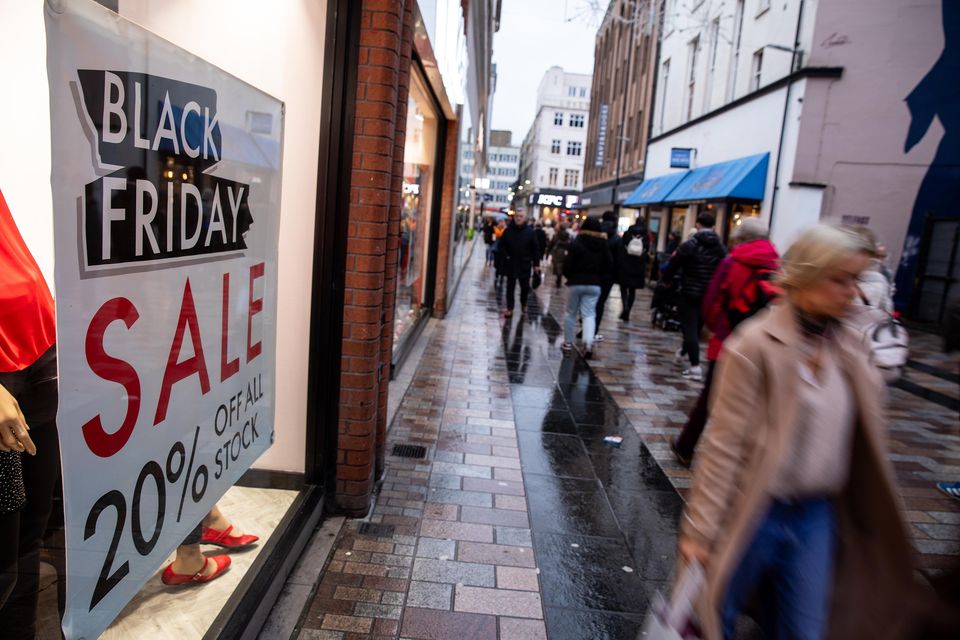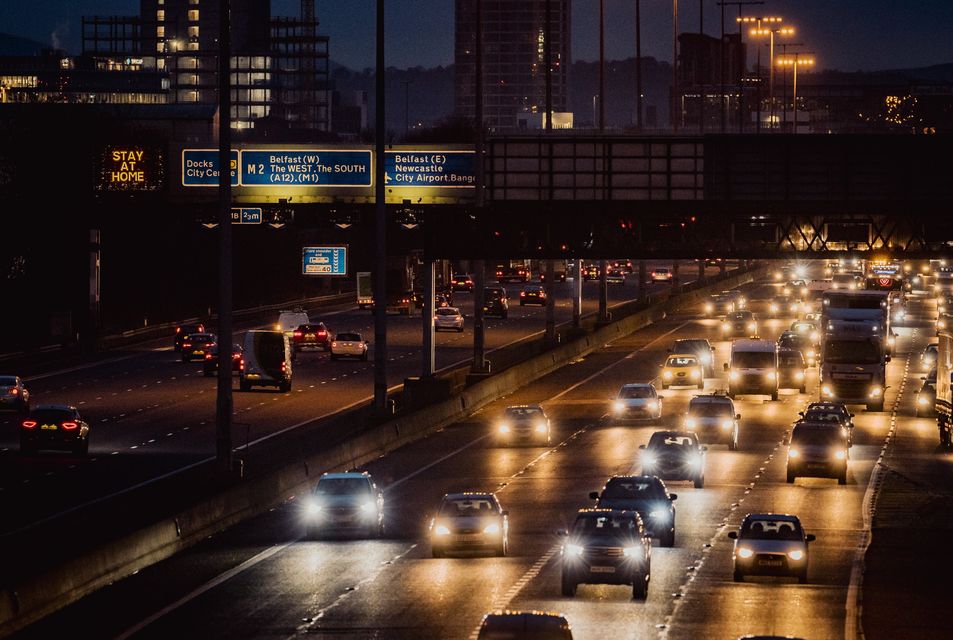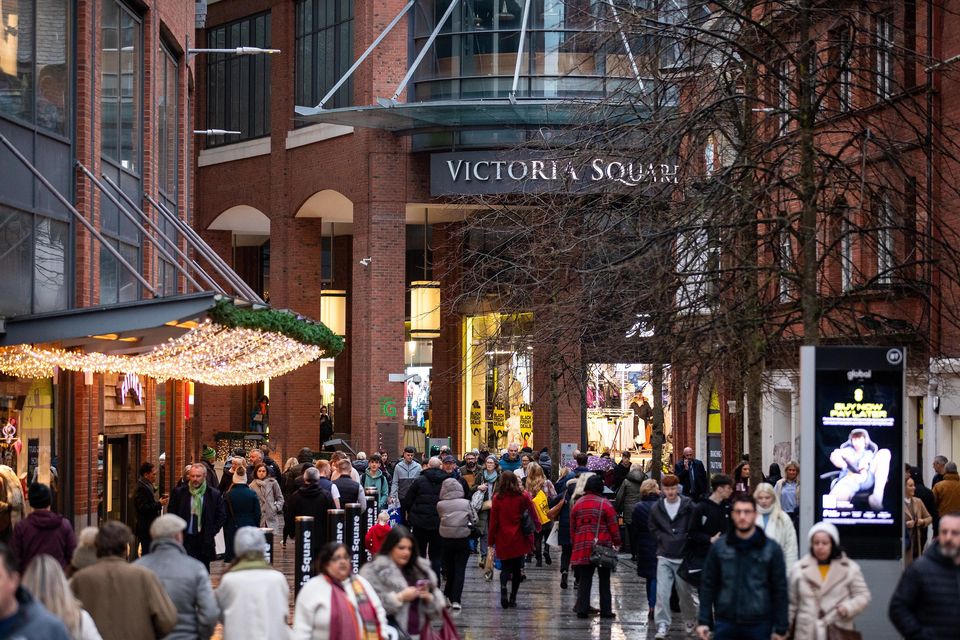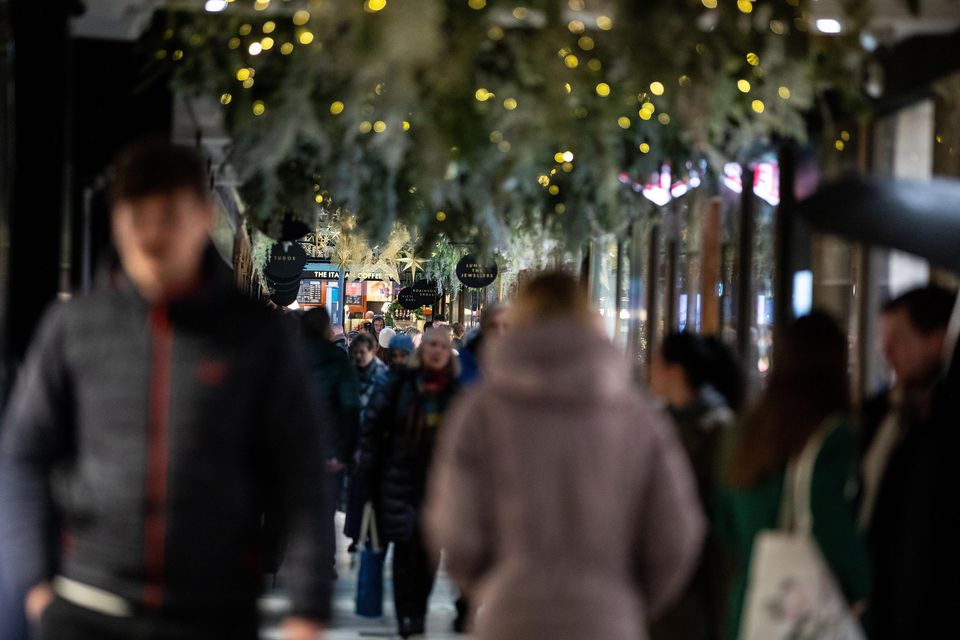Belfast retailers’ hopes for a bumper Christmas appear to have been dashed by confirmation of a 7.2% decline in shop footfall in December.
According to the Northern Ireland Retail Consortium, footfall in high streets and shopping centres across NI declined by 5.8% in December, the final month of the so-called ‘golden quarter’.
But in Belfast, where shoppers and revellers were contending with heavy traffic congestion in the run-up to Christmas, there was a steeper drop of 7.2%. That was a deterioration on November’s 2.3% decline.
It left the city second from the bottom in a table of 11 UK cities, with only Bristol putting in a poorer performance with a 7.5% drop.
Shoppers in Belfast on Black Friday, November 29 2024. But a disappointing performance was to follow in December for the city’s shops, a report has said
December’s drop across NI of 5.8% was the worst decrease of the four UK nations and much lower than the UK average drop of 2.2%. In addition, it marked a deterioration of November’s decline of 2.8%.
The figures from the NIRC and analysts at Sensormatic Solutions cover five weeks from November 24 to December 28 — so include performance on Black Friday, which fell on November 29. The NIRC said that brought a fillip to the figures for December.
Across 2024, footfall in NI shops was down 2.2% on 2023, the figures said, while over the ‘golden quarter’ — the last three months of the year as Christmas approaches — it had dropped 3%.
Traffic worsened in Belfast in December due to the impact of roadworks and the dismantling of the Boyne Bridge
Shopping centre footfall in Northern Ireland declined by 5.7% in December, which was an improvement on a decline of 7.3% in November.
Neil Johnston, director of the Northern Ireland Retail Consortium, said the further slip in footfall in December rounded off a “pretty drab” golden quarter and a disappointing 2024 as a whole.
Read more
“Black Friday promotions gave a fillip to foot-traffic early on, however across the month as a whole footfall was feeble and fell across all destinations.
“There’s little denying these are disappointing figures for retailers with bricks and mortar premises, many of whom were hoping for a final flourish to the year and a good Christmas to help weather increasing costs and tide them over the leaner months early in the new year.”
Shoppers at the entrance to Victoria Square in Belfast on Black Friday, November 29 2024
But he said that with a third of non-food retail sales now made online, consumers may increasingly be turning to technology — though overall, he said times were uncertain.
“This remains a period of significant flux for retail. Weak footfall, sluggish demand, rising government-mandated cost pressures, and an uncertain outlook are all weighing on stores.
“The structural, economic, and regulatory changes affecting retail show few signs of abating.”
Retailers are bracing themselves for an upcoming increase in the national living wage, and a rise in employer national insurance contributions, both in April.
Shoppers in Victoria Arcade in Belfast on Black Friday, November 29 2024
Traffic built up dramatically in Belfast in the run-up to Christmas, partly down to the closure of Durham Street to dismantle Boyne Bridge and roadworks at the A2 Sydenham Bypass. In an attempt to ease the problems, taxis were allowed to use bus lanes.
Andy Sumpter, retail consultant EMEA at Sensormatic Solutions, said: “While December saw some flurries of festive footfall around a few key trading days, overall, the picture was filled with much less sparkle as shopper traffic remained subdued in what should have been the highlight of the golden quarter.
“While store visits did build ahead of Christmas, it was never quite enough to reverse the shopper count deficit against last year.
“As footfall limped towards the festive finish line, December’s lacklustre performance compounds a disappointing end to 2024, marking the second consecutive year of declining store traffic.
“Retailers will now need to look afresh to 2025 and chart a course to adopt innovative strategies to reverse this trend or maximise the sales potential of fewer visitors, finding new ways to make each store visit count.”



